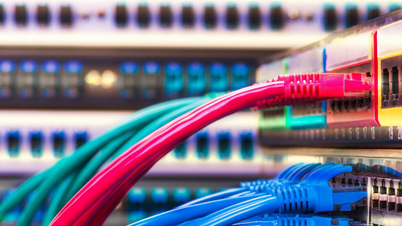
Open Mike | After IP Transition, Possibilities Abound

Once broadcasters have negotiated the challenges of moving infrastructure and equipment to IP, they can begin to explore a new world of opportunity.
The IP-driven transformation of their business and operations has an impact on the entire content chain. It expands the ways in which broadcasters can create, produce, manage, publish and monetize content, and it increases the ways in which that content can be consumed.
The transition to IP allows for greater integration and greater interaction, primarily by bringing greater intelligence into broadcast workflows. In the acquisition and production stages of the content chain, greater integration can mean using media and associated metadata in smarter and more interesting ways to create and distribute content. For consumers, this translates to more interactive experiences with whichever screen they use at any given moment to view content.
Enhancing Acquisition
Within today’s IP-based broadcast workflows, all elements — from endpoints such as cameras to devices the very core of the network — are addressable. These elements are far more intelligent than devices operating in the SDI world and become almost like living entities. Each has a name that can be used to identify it, refer to it, define its capabilities and more. As addressable entities, these elements can be managed with greater ease and flexibility, whether locally or from a central (remote) location.
In addition to making devices addressable, IP-based operations allow for independent handling of audio, video, and data flows — including information about media itself and timestamps that facilitate proper synchronization of various flows throughout production and distribution workflows. As they capture audio and video, smart acquisition devices also capture, create and contribute metadata that informs handling or processing by downstream systems and workflows.
Because the transition to IP makes it easier to leverage machine learning (ML) and artificial intelligence (AI), broadcasters can use processing engines (on-premise or in the cloud) for tasks such as face and voice recognition to add further metadata to newly-acquired content. This wealth of information about content, along with timestamp data, supports powerful real-time search capabilities with frame-accurate results. Integrated into the content chain, all of this data drives more dynamic possibilities within production.
Optimizing Production
Because standards for the transport of media over IP treat video, audio and data as individual flows, it has become fairly easy both to interchange those flows and to work with them independently across network-connected systems.
Broadcasters are taking advantage of this newfound agility in many ways. They are using it to establish collaborative production workflows across geographically distributed sites, to automate and accelerate critical processing tasks and to be more versatile in customizing content for different viewing audiences and a multitude of distribution platforms.
IP-based network infrastructure and media transport over IP simplifies collaboration across multiple sites, making it easier and more cost-effective for broadcasters to take advantage of specialized talent regardless of differences in region or time zone.
Visual effects artists, animators, and other creatives working in cities around the world can become part of a highly orchestrated remote production workflow. The bulk of the production team for a live sports event can “stay at home,” working at a centralized production facility rather than travel to various remote sites. In both cases, this model helps to boost the quality of content — and often the efficiency of the production workflow — while keeping overall production costs in check.
The enhancement of media integration allows for better storage and retrieval of data and content for distribution to specific markets. Flexibility in moving media flows (video and audio) and data likewise opens the door for acquiring and distributing content in different ways.
This could mean sourcing user-generated content from an iPhone — perhaps a fan at a high-profile sports event — and incorporating it into the production. Or, it could mean using an additional camera or two to offer viewers an extra feed — a particular team’s bench, for example — in coverage of that event.
Ultimately, IP benefits broadcasters because it improves their ability to produce engaging content, customize that content and deliver it to media consumers across Facebook Live, Twitter, a linear service or any other of their many viewing options. The challenge for the broadcaster is to take full advantage of this intelligence to enable smarter, more efficient workflows that yield new possibilities for managing media and the viewing experience.
Having transitioned their operations into the IP realm, broadcasters can get away from the limits of traditional production models and begin to leverage media and data together in ways that benefit their business and their audiences.
Because the broadcast industry’s migration to IP is well underway, those media organizations that are still in the planning stages have many examples from which to learn.
According to the Alliance for IP Media Solutions (AIMS), more than 200 IP installations have been built on the new SMPTE ST 2110 and ST 2022-6 standards that support media transport over IP. TV Globo and Sky Italia moved to hybrid SDI-IP workflows back in 2018, and today Telemundo, RTL, TV Globo, Sky Italia the BBC and others are running live IP facilities. With access to an increasingly expansive array of IP-based workflows and solutions, broadcasters are transforming their businesses through new levels of integration and interaction.
Rafael Fonseca is VP product management of Artel Video Systems.
































Comments (0)